Most weightlifters want to know how to get a bigger butt.
Why?
Perky glutes turn heads, for one.
But it’s not just about appearance; having strong “butt muscles” can enhance your performance in almost any sport, including weightlifting.
If you’re someone looking for guidance on how to grow your butt, you’re in the right place.
In this article, you’re going to learn precisely how to get a bigger butt fast. You’ll also discover the best exercises for a bigger butt, how to structure your diet and training to grow your glutes, the best workouts to get a bigger butt, and more.
Table of Contents
How to Grow Your Butt
When it comes to learning how to get a bigger butt, there are three areas you need to focus on:
- Doing the right butt exercises and butt workouts.
- Getting progressively stronger over time.
- Eating enough to support glute growth.
Let’s discuss each.
1. Do the right butt exercises in your butt workouts.
Most guides on how to grow your butt recommend spending too much time on isolation, resistance band, and machine exercises.
This is wrongheaded.
The “secret” to building a bigger butt is to get as strong as possible on compound exercises that train your glutes.
A good guideline is to spend 80% of your training time doing compound exercises like squats, deadlifts, and hip thrusts and the remaining 20% on isolation, resistance band, and machine exercises.
2. Get progressively stronger over time.
Strive to add weight or reps to every exercise in every butt workout. This is known as progressive overload, and it’s one of the best ways to maximize the muscle-building effects of weightlifting.
3. Eat enough to support glute growth.
To maximize glute growth, you need to maintain a mild calorie surplus, ideally around 110% of your total daily energy expenditure (TDEE) each day.
This will optimize your body’s “muscle-building machinery,” greatly enhancing your body’s ability to recover and build muscle.
The one exception is if you’re a beginner weightlifter. Novices can grow their glutes at maintenance calories thanks to a phenomenon known as “newbie gains.” However, if you’ve been training for over a year, maintaining a calorie surplus becomes essential for muscle growth.
Furthermore, you need to eat enough protein. Around 0.8-to-1.2 grams of protein per pound of body weight per day works best for most.
To learn exactly how many calories and how much protein you should eat to maximize butt growth, take the Legion Diet Quiz
The Best Exercises for a Bigger Butt
You now know that when it comes to building a bigger butt, most people focus on the wrong butt exercises.
Not only that, but they spend too much time doing high-rep training instead of getting progressively stronger by lifting heavy.
That’s why the majority of the exercises in this article allow you to lift heavy weights safely and add weight over time—exactly what you need to build a bigger butt fast.
1. Squat
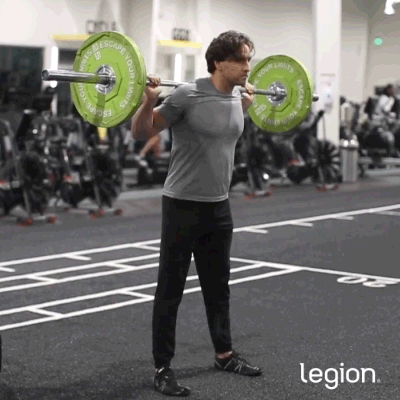
Why: Research shows the barbell back squat is one of the most effective exercises for a bigger butt, likely because it allows you to lift heavy weights safely and progress regularly. It’s an especially effective booty builder when you squat to parallel or deeper.
How to:
- Position a barbell in a squat rack at about mid-chest height.
- Step under the bar, pinch your shoulder blades together, and rest the bar above the bony ridges on the bottom of your shoulder blades.
- Lift the bar out of the rack, take 1-to-2 steps backward, and place your feet slightly wider than shoulder-width apart, with your toes pointing slightly outward.
- Keeping your back straight, sit down and push your knees out in the same direction as your toes.
- Stand up and return to the starting position.
2. Deadlift
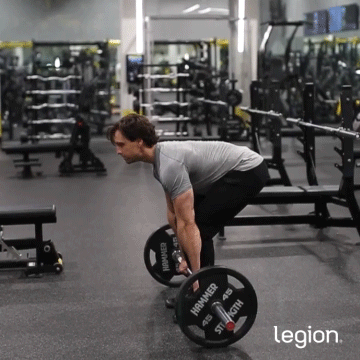
Why: The deadlift allows you to train your entire posterior chain (the muscles on the back side of your body, including your glutes) with heavy weights, which means it’s ideal for gaining glute size and strength.
How to:
- Stand with your feet slightly narrower than shoulder-width apart, with your toes pointed slightly out. Move a loaded barbell over your midfoot so it’s about an inch from your shins.
- Take a deep breath into your belly, then place your hands on the bar just outside your shins.
- Flatten your back and drive your body upward and slightly back by pushing through your heels until you’re standing up straight.
- Reverse the movement and return to the starting position.
3. Hip Thrust

Model: Rachael Becker
Why: The positioning of the barbell during hip thrusts forces your glutes to work hard throughout the entire range of motion, which is a unique benefit of this exercise.
How to:
- Sit on the ground with your shoulders resting against a bench that’s perpendicular to your body.
- Roll a barbell over your thighs so it sits in your hip crease (use a bar pad to protect your hip bones and make the exercise more comfortable).
- Plant your feet on the floor about shoulder-width apart with your knees bent at a 90-degree angle.
- Push the bar upward with your hips by pressing through your heels until your upper body and thighs are parallel to the ground, and your shins are vertical.
- Reverse the movement and return to the starting position.
4. Step-up
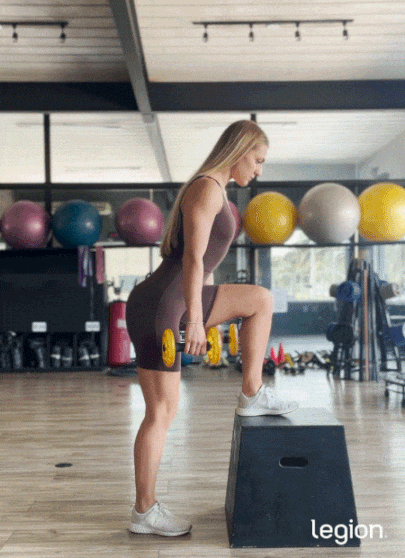
Why: The step-up is an outstanding glute exercise that helps find and fix size and strength imbalances, boosts your squat performance, and is easier on your knees and back than many other exercises for a bigger butt.
How to:
- Holding a dumbbell in each hand, place your right foot on a box, bench, or other surface about knee height off the floor.
- Keeping your weight on your right foot, fully straighten your right leg.
- Lower your left foot toward the floor and return to the starting position.
5. Reverse Lunge
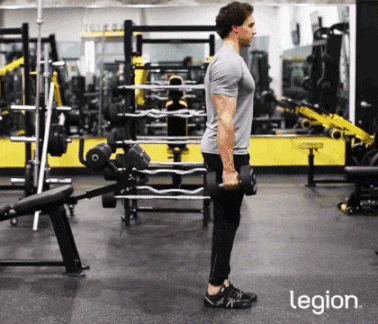
Why: While all lunge variations train your entire lower body to a high degree, the reverse lunge emphasizes the glutes the most.
How to:
- Holding a dumbbell in each hand, stand up straight with both feet about hip-width apart.
- Step back about two-to-three feet with your left leg, placing most of your weight on your right foot.
- Lower your body by bending both knees until your left knee touches the floor.
- Push off the floor with your right foot and lean slightly backward, allowing your legs to straighten.
- Once you’re standing, bring your left foot forward so that it’s next to your right foot, then repeat on your left side.
6. Bulgarian Split Squat
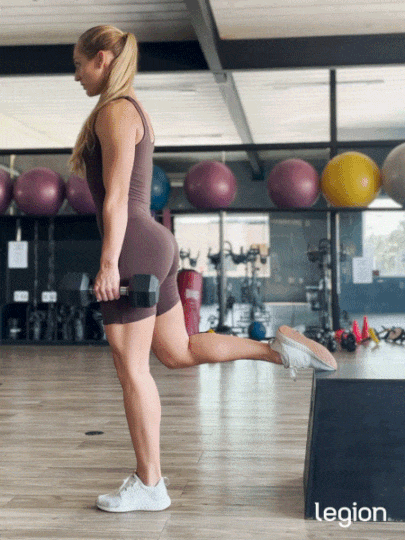
Why: Research shows that the Bulgarian split squat is an excellent glute exercise. Because it trains just one leg at a time, it’s particularly useful for finding and fixing muscle or strength imbalances.
How to:
- While holding a dumbbell in each hand, stand about two-to-three feet in front of a bench.
- With your right foot (and heel in particular) firmly planted, place the top of your left foot on the bench behind you.
- Look at a spot on the floor six-to-ten feet in front of you and lower your butt toward the floor by bending at your right knee.
- Keep lowering yourself until your right knee bends to 90 degrees.
- Stand up and return to the starting position.
7. Romanian Deadlift
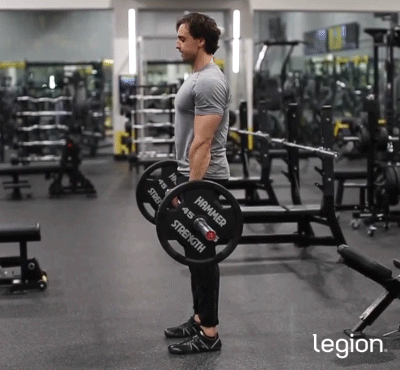
Why: The Romanian deadlift emphasizes the hamstrings and glutes more than other deadlift variations. It’s also considerably less fatiguing, so you can do it more often without wearing yourself to a frazzle.
How to:
- Stand up straight holding a loaded barbell with a shoulder-width, overhand grip (palms facing toward your body).
- Flatten your back and lower the weights toward the floor in a straight line while keeping your legs mostly straight, allowing your butt to move backward as you descend.
- Once you feel a stretch in your hamstrings, bend your knees slightly more, and continue lowering the weights until your lower back begins to round.
- Reverse the movement and return to the starting position.
8. Glute Bridge
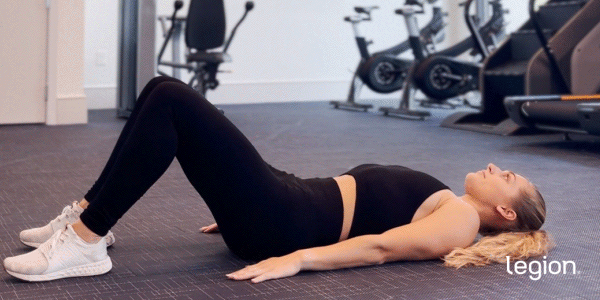
Why: The glute bridge is a useful glute isolation exercise because it’s easy to learn, lets you start with your body weight, and strengthens your glutes effectively.
How to:
- Lie on your back on the floor with your arms by your sides and your palms facing the floor.
- Place your feet 15-to-18 inches apart, about 6-to-12 inches from your butt, and point your toes slightly outward.
- Lift your butt off the floor by pressing your shoulders and heels into the floor, pushing your knees out in the same direction as your toes, and squeezing your glutes.
- Continue thrusting your hips upward until your butt, hips, and knees form a straight line and your shins are vertical.
- Reverse the movement and return to the starting position.
9. Single-Leg Romanian Deadlift
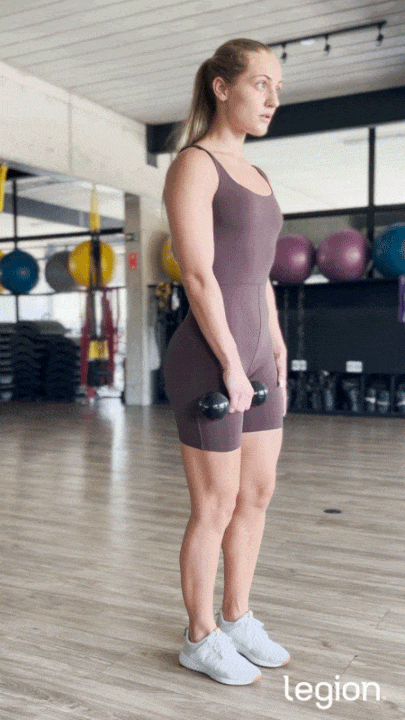
Why: The single-leg Romanian deadlift can help you establish a stronger “mind-muscle connection” with your glutes since you only have to focus on one side of your body at a time, which may benefit muscle growth in some scenarios.
How to:
- Stand up straight and hold a dumbbell in your right hand in front of your right thigh.
- Flatten your back and lower the weight toward the floor in a straight line while keeping your right leg mostly straight, allowing your butt to move backward and your left leg to straighten behind you as you descend.
- Once you feel a stretch in your right hamstring, bend your right knee slightly more, and continue lowering the weight until your lower back begins to round.
- Reverse the movement and return to the starting position.
- Repeat the process on the left side once you’ve completed the desired number of reps.
10. Cable Kickback
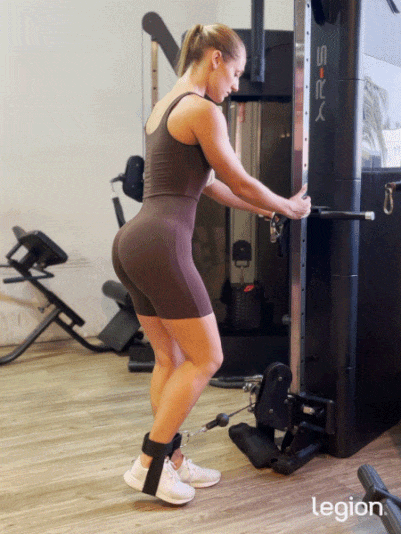
Why: The cable kickback trains hip extension (moving your thighs away from your upper body) through a slightly different range of motion than other butt exercises, which likely benefits growth.
How to:
- Set the pulley on a cable machine to the lowest setting and attach a cuff attachment.
- Secure the cuff around your right ankle, then stand about a foot from the cable machine facing the pulley.
- Lean forward slightly and grab the metal column that holds the pulleys with both hands.
- While maintaining a slight bend in your right knee, drive your right leg backward.
- Return the movement and return to the starting position.
The Best Workouts to Get a Bigger Butt
So far, we’ve covered the best exercises for a bigger butt. Now, let’s discuss how to put these exercises into workouts to get a bigger butt.
For best results, train your glutes twice weekly, leaving at least two days between butt workouts. For example, you could do Bigger Butt Workout #1 below on Tuesday, rest or train your upper body on Wednesday and Thursday, then do Bigger Butt Workout #2 on Friday.
If you’re crunched for time and can only do one butt workout weekly, do Bigger Butt Workout #1 on whichever day you’re able to train each week.
And for those without access to barbells, Bigger Butt Workout #3 offers a solution. It’s a dumbbell butt workout for people who want to learn how to grow your butt with minimal equipment.
Bigger Butt Workout #1
- Squat: 3 sets of 6-to-8 reps with 2-to-3 min rest
- Romanian Deadlift: 3 sets of 6-to-8 reps with 2-to-3 min rest
- Bulgarian Split Squat: 3 sets of 8-to-10 reps with 2-to-3 min rest
- Hip Thrust: 3 sets of 8-to-10 reps with 2-to-3 min rest
Bigger Butt Workout #2
- Deadlift: 3 sets of 6-to-8 reps with 2-to-3 min rest
- Step-up: 3 sets of 6-to-8 reps with 2-to-3 min rest
- Reverse Lunge: 3 sets of 8-to-10 reps with 2-to-3 min rest
- Cable Kickback: 3 sets of 8-to-10 reps with 2-to-3 min rest
Bigger Butt Workout #3: Dumbbell Butt Workout
- Bulgarian Split Squat: 3 sets of 6-to-8 reps with 2-to-3 min rest
- Single-Leg Romanian Deadlift: 3 sets of 8-to-10 reps with 2-to-3 min rest
- Dumbbell Reverse Lunge: 3 sets of 8-to-10 reps with 2-to-3 min rest
- Glute Bridge: 3 sets of 10-to-20 reps with 2-to-3 min rest
Workout Tips for How to Get a Bigger Butt Fast
1. End every set 1-to-2 reps shy of muscle failure.
To maximize glute muscle and strength gains, you must take most sets within a rep or two of muscle failure.
Ask yourself at the end of each set, “If I had to, how many more reps could I have gotten with good form?” If the answer is more than two, increase the weight or reps to make your next set more challenging.
2. Once you hit the top of your rep range for one set, increase the weight.
If your butt workout calls for 6-to-8 reps of the squat and you get 8 reps for a set, add 10 pounds to your next set.
If you manage 5 or fewer reps with the new weight, reduce the weight by 5 pounds to ensure you stay in the 6-to-8 rep range.
Follow this pattern of adding weights or reps to every exercise in every workout.
3. Take the right supplements.
The best supplements for maximizing glute development are:
- Protein powder: Protein powder provides your body with the nutrients needed to build muscle tissue and recover from workouts. For a clean and delicious protein powder, try Whey+or Casein+.
- Creatine: Creatine boosts muscle and strength gain, improves anaerobic endurance, and reduces muscle damage and soreness from your workouts. For a natural source of creatine that also includes two other ingredients to enhance muscle growth and improve recovery, try Recharge.
- Pre-workout: A high-quality pre-workout enhances energy, mood, and focus, increases strength and endurance, and reduces fatigue. For a top-tier pre-workout containing clinically effective doses of 6 science-backed ingredients, try Pulse with caffeine or without.
(If you’d like even more specific advice about which supplements you should take to reach your health and fitness goals, take the Legion Supplement Finder Quiz, and in less than a minute, you’ll know exactly what supplements are right for you. Click here to check it out.)
+ Scientific References
- Barbalho, M., Coswig, V., Souza, D., Serrão, J. C., Hebling Campos, M., & Gentil, P. (2020). Back Squat vsHip Thrust Resistance-training Programs in Well-trained Women. International Journal of Sports Medicine, 41(5), 306–310. https://doi.org/10.1055/a-1082-1126
- Barbalho, Matheus, et al. “Back Squat vs. Hip Thrust Resistance-Training Programs in Well-Trained Women.” International Journal of Sports Medicine, vol. 41, no. 5, 23 Jan. 2020, https://doi.org/10.1055/a-1082-1126.
- Caterisano, Anthony, et al. “The Effect of Back Squat Depth on the EMG Activity of 4 Superficial Hip and Thigh Muscles.” Journal of Strength and Conditioning Research, vol. 16, no. 3, 1 Aug. 2002, pp. 428–432, pubmed.ncbi.nlm.nih.gov/12173958/.
- Contreras, Bret, et al. “Barbell Hip Thrust.” Strength and Conditioning Journal, vol. 33, no. 5, Oct. 2011, pp. 58–61, https://doi.org/10.1519/ssc.0b013e31822fa09d.
- Park, Sanghoon, et al. “Comparative Analysis of Lunge Techniques: Forward, Reverse, Walking Lunge.” ISBS - Conference Proceedings Archive, 6 Nov. 2016, ojs.ub.uni-konstanz.de/cpa/article/view/6941.
- Park, Samho , et al. Comparative Study of the Biomechanical Factors in Range of Motion, Muscle Activity, and Vertical Ground Reaction Force between a Forward Lunge and Backward Lunge. June 2021, https://doi.org/10.14474/ptrs.2021.10.2.98.
- Jones, M. T., Ambegaonkar, J. P., Nindl, B. C., Smith, J. A., & Headley, S. A. (2012). Effects of unilateral and bilateral lower-body heavy resistance exercise on muscle activity and testosterone responses. Journal of Strength and Conditioning Research, 26(4), 1094–1100. https://doi.org/10.1519/JSC.0b013e318248ab3b
- Lehecka, Bryan J., et al. “The Effects of Gluteal Squeezes Compared to Bilateral Bridges on Gluteal Strength, Power, Endurance, and Girth.” PeerJ, vol. 7, 8 July 2019, p. e7287, https://doi.org/10.7717/peerj.7287.
- Barakat, Christopher, et al. “The Effects of Varying Glenohumeral Joint Angle on Acute Volume Load, Muscle Activation, Swelling, and Echo-Intensity on the Biceps Brachii in Resistance-Trained Individuals.” Sports, vol. 7, no. 9, 4 Sept. 2019, p. 204, https://doi.org/10.3390/sports7090204.
- Stokes, T., Hector, A. J., Morton, R. W., McGlory, C., & Phillips, S. M. (2018). Recent perspectives regarding the role of dietary protein for the promotion of muscle hypertrophy with resistance exercise training. In Nutrients (Vol. 10, Issue 2). MDPI AG. https://doi.org/10.3390/nu10020180
- Jd, Branch. “Effect of Creatine Supplementation on Body Composition and Performance: A Meta-Analysis.” International Journal of Sport Nutrition and Exercise Metabolism, 1 June 2003, pubmed.ncbi.nlm.nih.gov/12945830/.
- Eckerson, Joan M., et al. “Effect of Creatine Phosphate Supplementation on Anaerobic Working Capacity and Body Weight after Two and Six Days of Loading in Men and Women.” The Journal of Strength and Conditioning Research, vol. 19, no. 4, 2005, p. 756, https://doi.org/10.1519/r-16924.1.
- Bassit, Reinaldo Abunasser, et al. “Effect of Short-Term Creatine Supplementation on Markers of Skeletal Muscle Damage after Strenuous Contractile Activity.” European Journal of Applied Physiology, vol. 108, no. 5, 3 Dec. 2009, pp. 945–955, https://doi.org/10.1007/s00421-009-1305-1.











